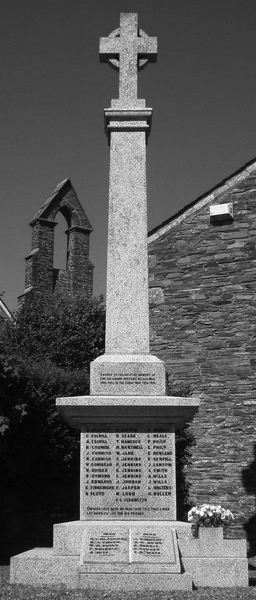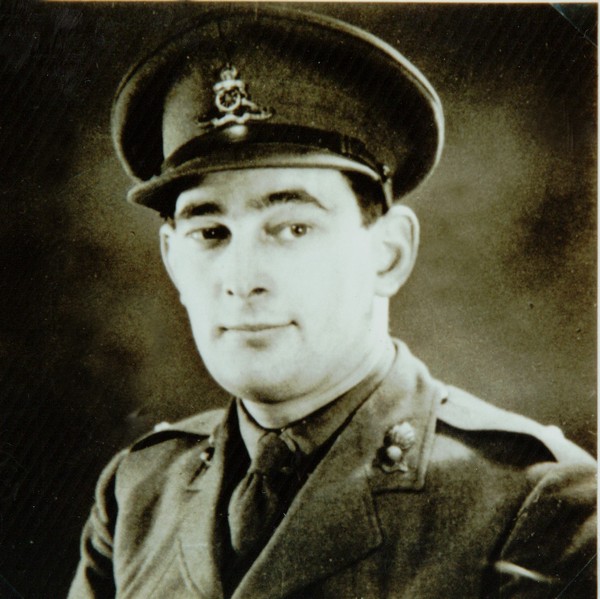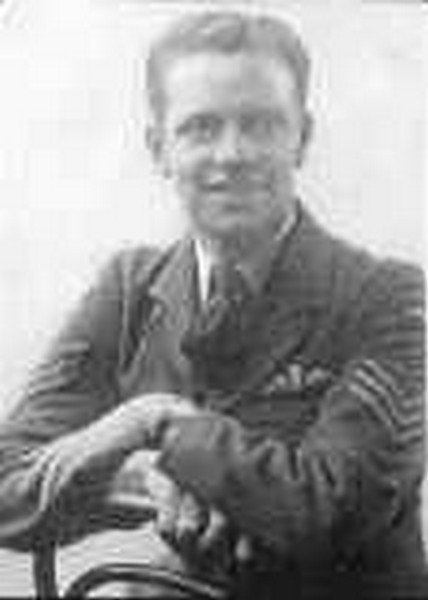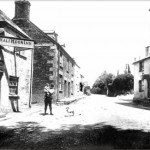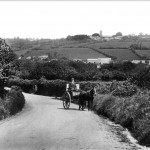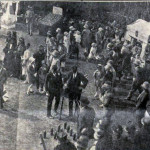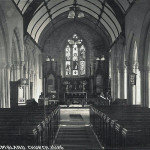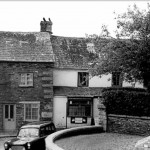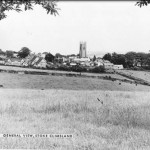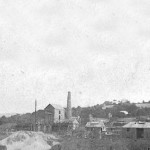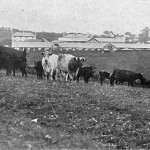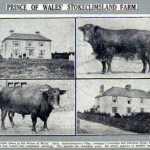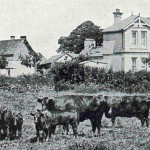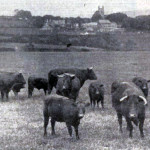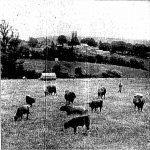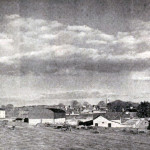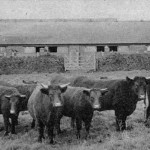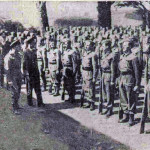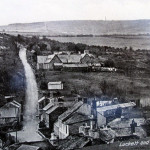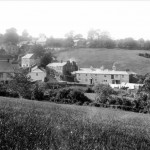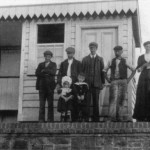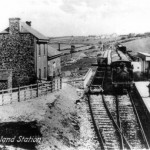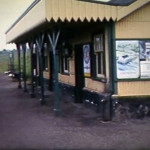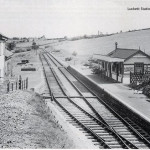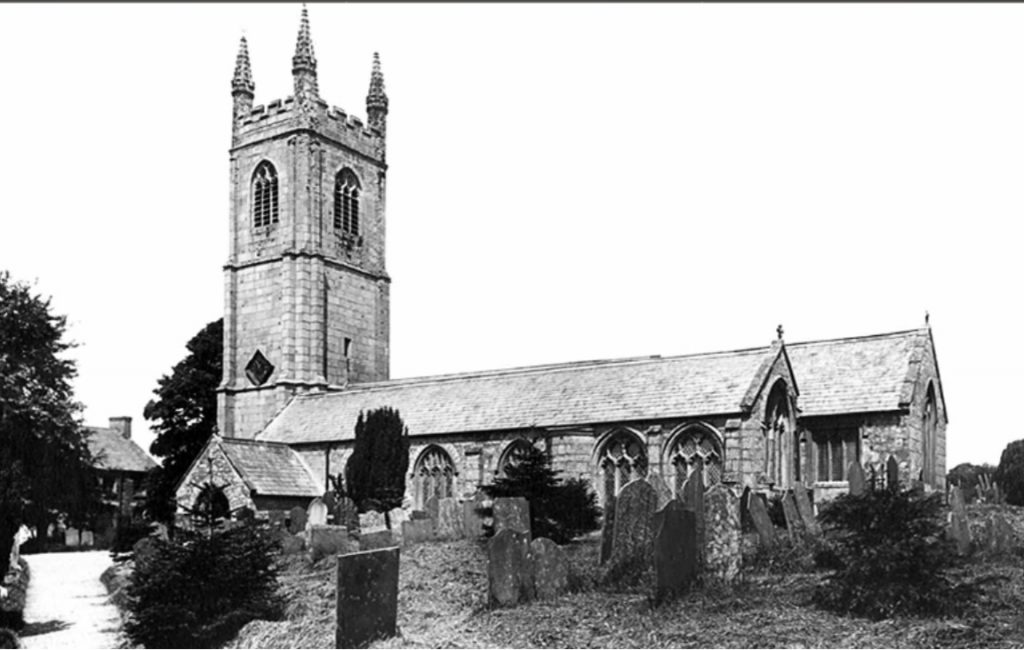
Stoke means ‘outlying farm’; Climsland is the name of the manor, which in the Domesday Survey of 1086 was referred to as Climstone. This suffix was added to the name distinguish it from other Stoke place names in Devon. Stoke Climsland, (Cornish: Eglosstock), is situated in the Deanery and Hundred of East. It is bounded on the north by the river Inny, which separates it from Lezant, and by the river Tamar which separates it from Milton Abbot, South Sydenham and Lamerton in Devon, (these days just Sydenham Damerell adjoins, Lamerton doesn’t quite come down to the river), and Calstock, on the south by Calstock and Callington, and on the west by Southill and Linkinhorne. Stoke Climsland parish was part of the Launceston Union for Poor Law administration and parish relief. Also for several years, Stoke Climsland fell under the scope of the Launceston Rural Council.
As well as Stoke village and Luckett, the parish contains many hamlets of Beals Mill, part of Bray Shop, Downgate, Higherland, Monks Cross and Venterdon. The manor of Climstone was one of the seventeen Antiqua maneria of the Duchy of Cornwall, there were 5 hides of land and land for 24 ploughs. One hide was held by the lord (with 3 ploughs and 9 serfs) and 30 villeins and 30 smallholders had 17 ploughs and 4 hides of land. There were also 3 acres of meadow, 16 square leagues of pasture and 3 square leagues of woodland. The income from the manor was £6 sterling. In the 12th century, Climsland became part of a 250 hectares (620 acres) Royal Deer Park called Kerrybullock, until it was disparked by Henry VIII in the 16th century.
At Horse Bridge on the road to Tavistock is a fine bridge of seven arches (built in 1437). At Whiteford Sir John Call built a Georgian mansion in 1775 but it no longer exists: the stables and a garden temple remain and a few fragments have been reused in a house nearby. At one time there were seven mines employing over a thousand men, but these went into decline at the end of the 19th century, although the Luckett mines were reopened for a period of just over five years in 1947.

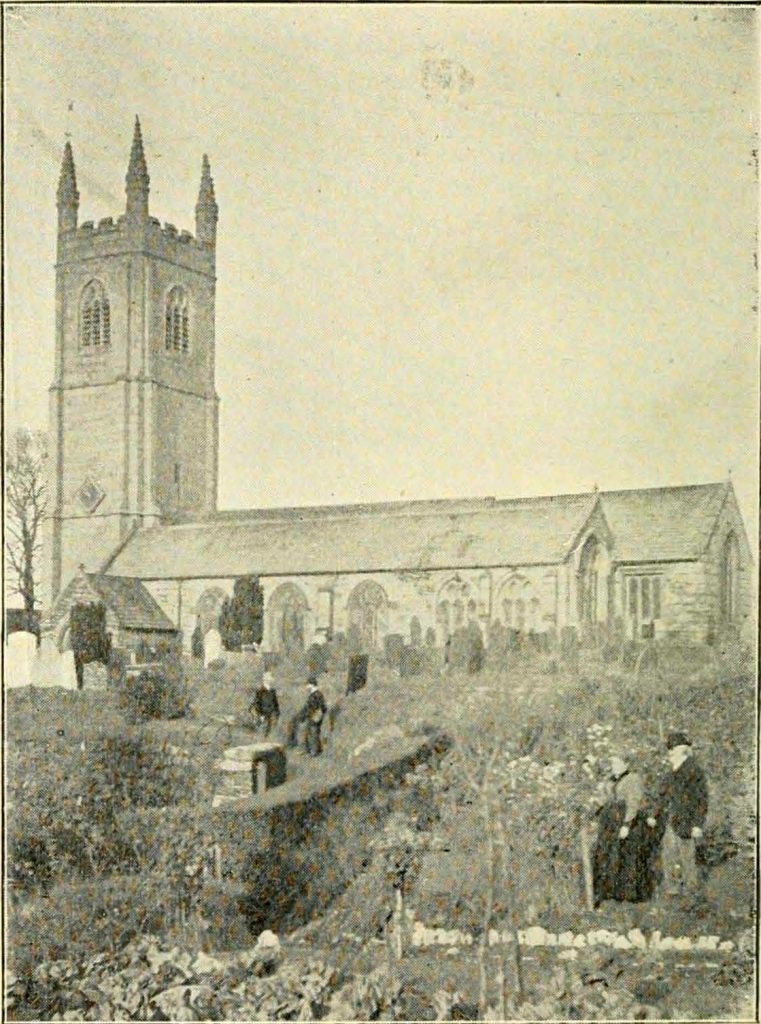
All Saints Church.
The present church building is 15th century, with north and south aisles and a west tower. The tower is of granite and the wagon roofs are medieval. There has been a church on this site since Norman times, and the chancel and nave are the oldest part of the present building with the north and south aisles being added later. The church, which was restored in 1860, now comprises a chancel, nave, and north and south aisles. The wooden arch of the chancel springs from angel corbels carved in Bath stone – one holding a chalice, the other a paten. There is an early 15th century south porch. In the middle ages the porch was used for many church services. The churching of women was held in the porch and the baptism and wedding services began there. At the right hand of the inner arch of the south porch, which is the only entrance to the church, is a plain stoup; a chancel and north doors are blocked. The tower arch, which is lofty and moulded, is open to the nave. The church is buttressed throughout. The tower is a handsome structure of three stages, buttressed and battlemented, with crocketed pinnacles at the angles. Containing a
clock, dated 1862, and eight bells, the tenor, which is the largest,weighing nearly one ton. In 1771 the five bells were re-cast by the Penningtons, of Stoke Climsland, and the present peal of eight took their place. The register dates from the year 1538, and this is one of the few parishes in the Archdeaconry that go back , s0 far in date. There are 500 sittings.
Church Monuments:
The east window is an ornamental Memorial, and is filled with rich stained glass, the chief figures being the Saviour and the Four Evangelists. It is inscribed :
“Sacred to the Memory of Elizth. Rose, the beloved wife of the Honble. and Revd. Wm. H. Spencer, rector of this parish, who departed
this life in sure and certain hope of a resurrection to eternal life. 25 Mar.
1851.”
A north chancel window, displaying angels with scrolls and foliage, is inscribed :-
“This window was set up in memory of Georgiana Mary Call, who died
May 17th. 1837. by her sister. Augusta Hornby.”
There are inscriptions on monuments and floorstones: One to Ezekiel Helier, M.A., Rector of this parish who died May 23rd, 1614, is in Latin.
“Here lyeth the bodye of Sampson Manaton-1657 dye to lyne” Arms of Manaton.
“Here lyeth the body of John Smyth. Gent., who dyed the 26 day of December. Anno Dom. 1676: aged 74.”
“Here lyeth the body of Francis Kekewich, gent., the Sonne of John Kekewich. He was born at Catchfrench, baptized on ii day of June, 1609, at , St. Germans: he died and was buried the 29th day of April, 1681.”
“In memory, of Robert Knight, the elder, of Alden, who died the 17 day of Augt., 1656. In memory of Ione, the wife of Robert Knight, the younger of Alren, who died the 3 day of, Septr., 1653.
Impartiall death. Such as by faith
By Killing thou dost saue Lye slee Ping in their graue .”
“In memory of William Clarke, of Whitford, in this Parish, who dyed the 7th day of May, Ano. D’ni 1649.
Her’s rest and peace within my grue,
Which I in life could neuer haue.”
“In memory of John Hawton, of Venterdon in this Parish, who died the 12th day of Iune. Ano. D’ni 1651.
In Christ I liu’d by Christ I hope
In Christ I dyde, to be reviu’d.”
The most interesting inscription in the Church is one on a slab to the memory of John Bagwill:-
“Here lyeth the boddy of the Worshipful John Bagwill, Batchelor in Divinity, Vicar of St. James and Kewbye, Rector of Stoek Climsland, Chaplain to his Majesty – Justice of the Peace & – 4th day of Maye, Anno Domini 1623.”
Master J. Bagwell being sicke made his epitaph.
My byrthe plaice Exeter, my scholle I Oxforde call,
My maintenance to live I find within Cornwall,
I not without skill am, which I the preacher shew,
That thou, O Cornwall! by these payn’s may’st know.
This earth to me all curst Heaven is my country too;
This life I Iive is not true life another I pursue. O Christ to mee come thou, byd thou mee come to thee
In earth my hope thon art, in Heaven my happiness shalt thou be.”
The deceased is represented on the slab as kneeling, with his hands clasped at a lectern, on which is an open Bible; whilst behind him is Death as a skeleton, with a scythe about to strike a dart at him; and underneath are the following lines :-
“I dread not Death nor yet his dart,
for death itselfe is kyllde,
By him that hath in euery part
the law for me fulfyllde.”
Arms-Paly. in chief a lion peasant.
On a marble tablet is inscribed :-
” To the Memory of Sir John Call, of Whiteford in This County, Bart., High Sheriff, 1771, unanimously Elected Member for Callington in 1784, 1790 and 1796; F.R.S., F.A.S. ; Died 1 March the 7th, 1801, at his Mansion House, Old Burlington Street. was Buried at Lee. in Kent. The 14th; aged 69.”
“The good Man’s days to Sybils Book compare. O! let me die his death all nature cries –
Then live his Life.-Young.
Oh most beloved, lamented, and revered,
In life most honor’d, and by death endear’d :
Vain will the Sculptur’d Marble seek to prove
How great thy merits, and how true our love.
Vainly, alas! those heartfelt virtues scan,
Which graced the Saint, and dignified the Man
‘Tis in the hearts of those thou lov’dst on Earth
That bleeding memory best records thy worth.
Tells how through every chequered scene below.
Of proud prosperity or deepest woe.
Thy manly step with christian meekness trod
The way of Justice, and the path of God.
To thyself rigid, yet thy guileless mind,
A fond excuse for others’ faults could find.
Approving conscience taught thee to sustain
The loss of sight,-and kiss the rod of pain:
Till heaven saw how ripe the fruit was grown.
And having prov’d it, mark’d it for it own.
Fell’d the rich tree, and bade the chasten’d Soul
Fly to its God, and reach it well-earned Goal.”
Arms.-Call quartering Mill.
Stoke Climsland Rectors 1265-1900
| Rectors | Patrons | Instituted |
|---|---|---|
| Matthew de Cellis | Richard, King of the Romans | 1265 |
| John de Dunstaple | Queen Isabella, Consort of Edward II | 1322 |
| John de Blancolisne | Queen Isabella | 1323 |
| Peter de Brompton | Edward the Black Prince | 1351 |
| Richard de Wolveston | " | 1356 |
| John de Gonamoncetre | " | 1362 |
| William Trenellus | ||
| Ralph Duclond | Queen Ann, Consort of Richard II | 1377 |
| Richard Prentys | " | 1393 |
| Walter Westney | King Richard II | 1397 |
| Nicholas Stoke | " | 1398 |
| Thomas Welyn | Henry Prince of Wales | 1399 |
| William Prestwych | ||
| Richard Selby | King Henry VI | 1436 |
| John Knight | " | 1444 |
| Roger Keys | " | 1452 |
| John Howell | " | 1456 |
| No entry occurs in the Episcopal Registers of the See of Exeter of any admission to the Rectory of Stoke Climsland for about a Century after the above date. | ||
| Francis Portinarius | King Henry VIII | 1536 |
| Thomas Palmer | " | 1552 |
| Richard Thorn | 1558 | |
| Robert Rolle | 1574 | |
| Ezekiel Hellyard | Christopher Mainwaring by grant of Queen Elizabeth | 1596 |
| John Bagwell | King James I | 1613 |
| Martin Day | Charles Prince of Wales | 1623 |
| William Parker | King Charles I | 1628 |
| William Pyke | " | 1644 |
| Nathaniel Crowe | William III and Queen Mary II | 1692 |
| John Heron | King William III | 1701 |
| Samuel Trewbody | Frederick Lewis Prince of Wales | 1740 |
| Willoughby Stanbury | King George III | 1768 |
| Copleston Radcliffe | George Frederick Prince of Wales | 1782 |
| Charles Lethbridge | " | 1805 |
| William Carwithen | Queen Victoria | 1841 |
| William Henry Spencer | Prince Albert | 1850 |
| John Sedgwick | Albert Edward Prince of Wales | 1872 |
| Richard Henry Manley | " | 1876 |
Non-Conformists
Downhouse.
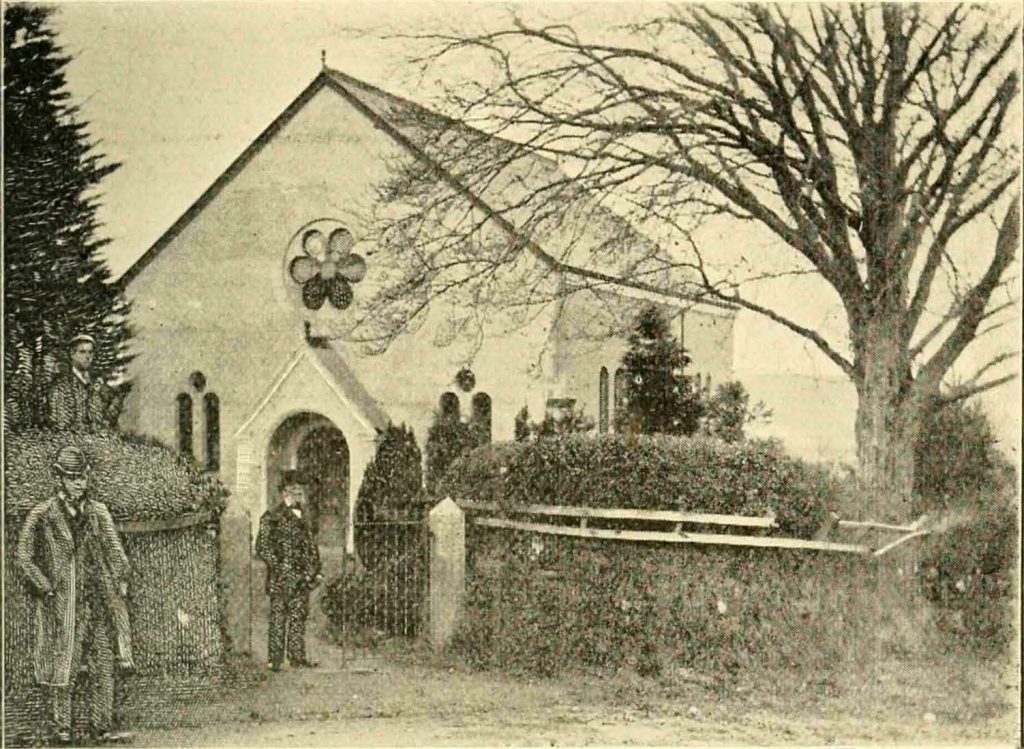
This United Methodist Free Church (UMFC) was opened on November 19th, 1855, the ceremony being performed by the Rev. J. Swan Withington, of Salisbury. It was built on a piece of ground purchased from the Hon. and Rev. W. H. Spencer, formerly Rector of Stoke Climsland. Costing £700 it was designed and built by Edward Rendell. It originally sat 100 people, but this rose to 200 seats. The services had previously been held in a building on the other side of the lane which became the Sunday School. It was for a time licensed for marriages but has now been converted to a dwelling; however the adjacent burial ground is still maintained as such.
Hampt. This chapel was erected as an independent church on the front is the date 1835 and the name ‘Jehovah’. It contained a total immersion font, a gallery and had a Sunday Room for a dozen or so scholars. In 1875 it was sold to the Plymouth Brethren and in 1959 it was converted to a dwelling. There was a small burial ground around the building.
Luckett.
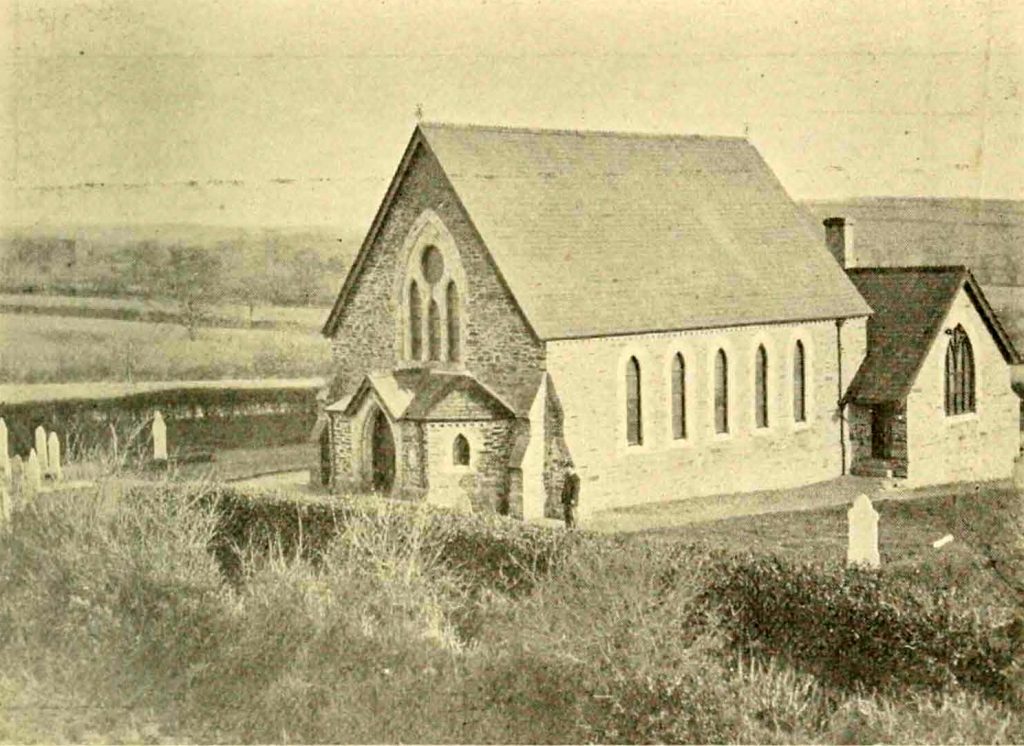
The pioneer of Methodism in Luckett was John Rapson, where he preached in one room of a small cottage in the 1830’s. John was not only the local preacher, but also class leader and chapel steward to a Chapel that was built in 1840. After his death the work of both Church and Sunday School was carried on by J. Eastman, T. and J. Henwood, W. Crews and H. Skinner, who resided as far away as Holmbush, Downgate and Higherland. John Rapson’s son, Bat, succeeded his father in filling the office of local preacher, class leader and chapel steward. During the early years he was also choirmaster and conductor of a stringed orchestra. During his tenure of office the Society considerably increased; he had as co-workers, Messrs. W. Rich, T Gregory, J. Doidge, J. Peake, Rowe, Perry, Dunstan, and Cornish. The original chapel from 1840 was demolished when a new one was built in 1877 at a cost of £700. A schoolroom was added in 1889. The building was closed for worship in 1993 and was demolished a couple of years ago. The burial ground surrounding the building is still maintained as a memorial garden.
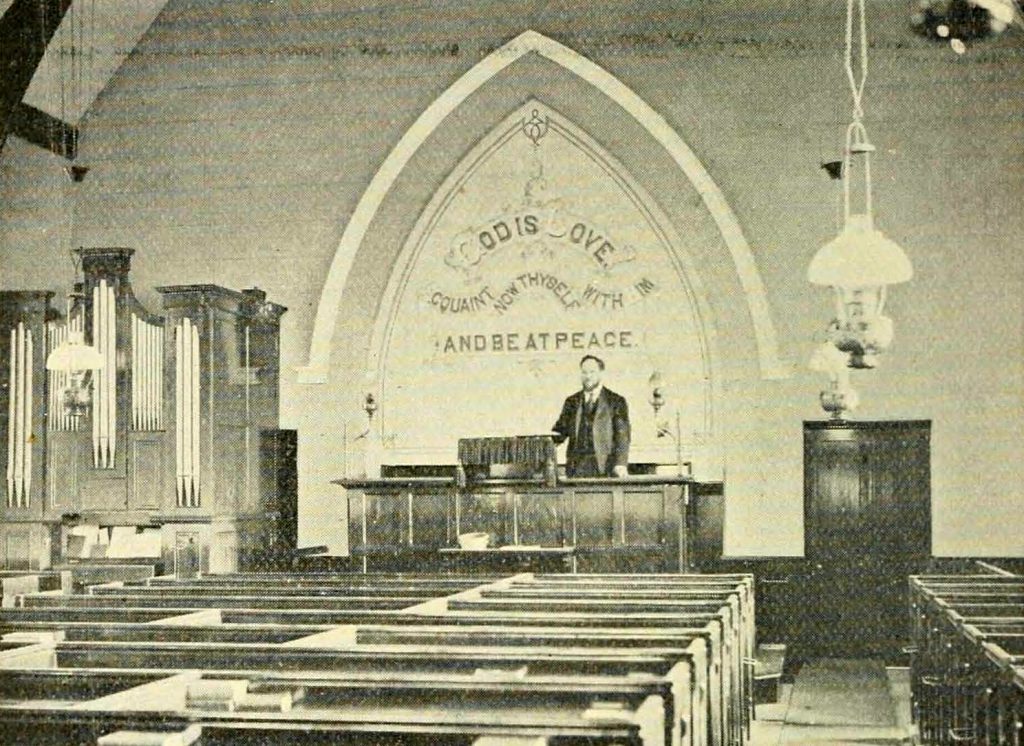
Monks Cross.
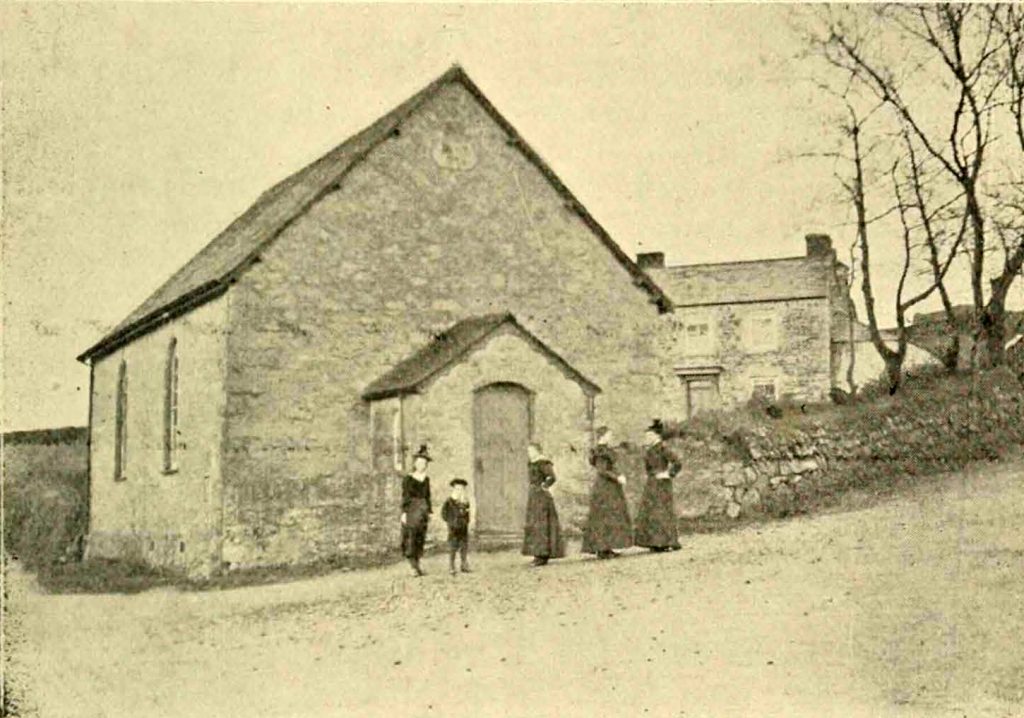
There was a small Bible Christian Chapel at the cross roads with the foundation stones being laid on November 30th, 1874, and the Chapel opening on April 22nd, 1875. It cost about £180 and measured 20 feet by 30 feet. A Sunday School was added on the opposite side of the road in 1889 at a further cost of £184. The chapel closed in the 1970s and was demolished but the Sunday School was converted to a dwelling.
Downgate. Another Bible Christian chapel was built at Downgate only 2 miles from Monks Cross. This was a larger chapel erected in 1854 although it has also been listed as a Wesleyan chapel. The chapel was licensed for marriages in 1892 but very few occurred there. There was a Sunday School. The chapel closed in 1992 and is now a dwelling.
Bray Shop. This small chapel with its burial ground was originally a Bible Christian chapel; a stone shed on the opposite side of the road is said to be the original site of the chapel. It is still in use as a place of worship and is licensed for marriages.
Venterdon.
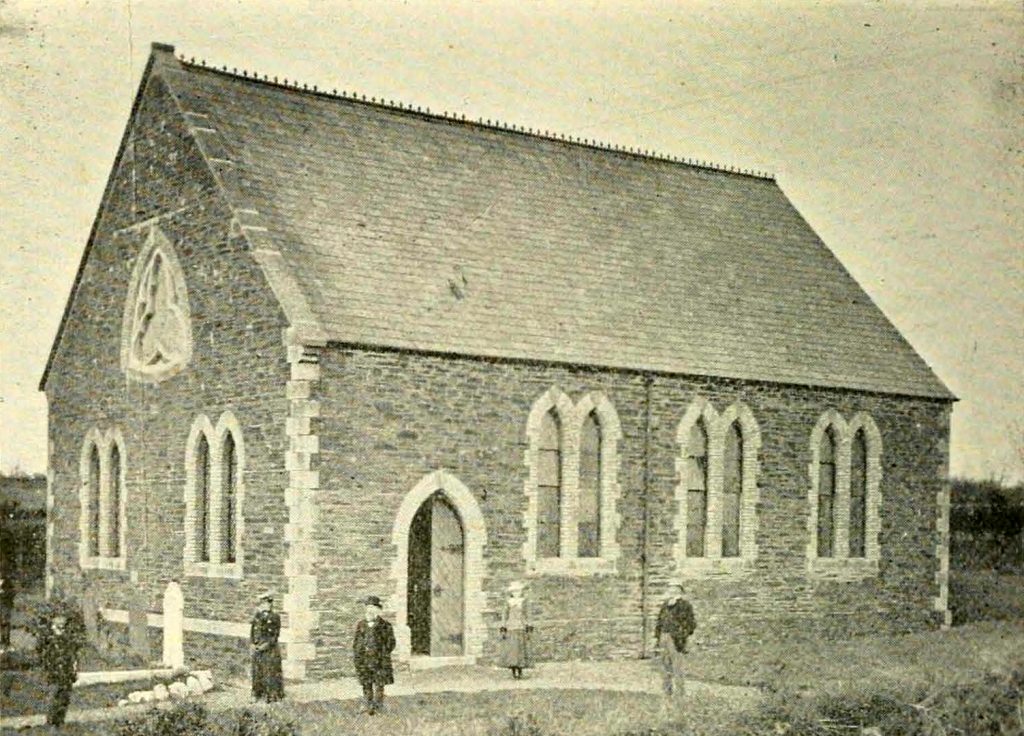
A Methodist Society was first formed in the early 1800’s, when services were held in a cottage, now demolished, belonging to John Spear of Kingston. The original Wesleyan chapel in Venterdon was erected in 1816, the new chapel was built behind this in 1869 and the old building was converted to a Sunday school but has since been demolished. The Rev. J. Jackson Wray preached the sermons at the stone laying ceremony, and the Rev. Richard Roberts at the opening ceremony. An organ was erected in 1899, built by Guest, of Exeter. The chapel remains a place of worship to this day.
Bray Shop. Also had a Bible Christian Chapel which is now converted to a private residence.
Manors
The Manor of Stow or Stoke Climsland was a parcel of the ancient possessions of the Duchy of Cornwall, and of copyhold tenure until 1845, when it became enfranchised under the “Duchy Assessionable Manors Act.” The tenants of this manor were not allowed even to send their children to School, or to marry their daughters without permission from the lord. The bailiff of the manor held a messuage with the appurtenances at a barbiage rent of 2s. 6d. at the feast of St. Philip and St. James; he has also to do suit to the court every three weeks, and when the duke came to Launceston to carry as often as the lord of the manor requested a load of wood daily to Launceston at his own expense.
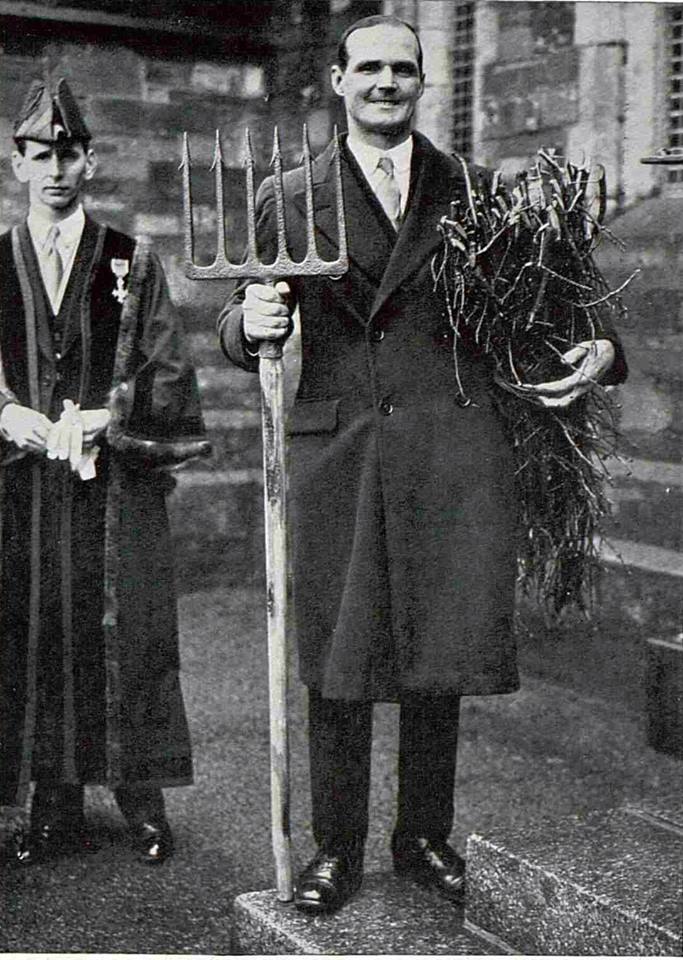
Deerpark, which was anciently called Kerribullock Park or Cari-Bollock, is also in the parish; and about the year 1329, according to records, the Park was replenished with 150 deer. It was dis-parked by King Henry VIII. This estate also belonged to the Duchy. Earthworks in one of the fields provide evidence of human activity on the land at Deer Park Farm which can be traced back to the Iron Age (c.800BC – 43AD).
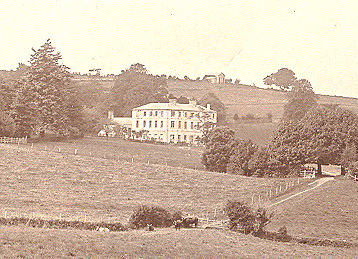
Whiteford House and property, purchased in 1879 by the Duchy from the representatives of the late Sir William Call, Bart., was in the early part of the 17the century the property and residence of the family of Clarke, to one whom there is a monument in the church. From that family it came to one of Addis. It afterwards became the property of Mrs. Prouse, on whose decease it passed to one John Archer, and was sold by his representatives to Mr. John Call, afterwards Sir John Call, Bart. This John Call was highly distinguished as an engineer in the Madras Army, and on his return with a fortune, he built the mansion at Whiteford. There was once a Park with thickly-wooded grounds surrounding the house but around 1880 most of the ornamental trees were cut down. The Duchy had the mansion converted into an office for the Duchy of Cornwall, who sold off all its contents furnishings for a pittance. The main house was demolished in 1913 while still in the ownership of the Duchy and some of the stone was used to build the nearby Duchy College. The stables and a garden folly survive, and the folly (called Whiteford Temple) survive, and Whiteford Temple is now owned by the Landmark Trust and let as a holiday cottage. There are Coade stone plaques on the exterior of the Temple.
The folly, built as a Grecian temple, is 500 yards from the house being also built by Sir John Call in 1799. The entrance to this temple consisted of three arches, built on finely cut granite piers. The internal dimensions of the building were 33 feet by 20, with a recess. It was here that Sir William Pratt Call, the son of Sir John, celebrated his birthday and on special occasions held all night balls. On these occasions the pathway from the mansion to the temple was then lit on each side with torches.
Stoke Climsland’s Fallen.
First World War.
Alfred BASSETT
Alfred was born on November 5th, 1877 to Harry and Eliza Bassett at Stoke Climsland. His father was the innkeeper at Stoke Climsland before taking up farming after the death of his wife, Eliza. He joined the Royal Navy (service no. 179147) rising to acting Chief Petty Officer. He married Isabel Dingle at Plymouth in 1906, and they set up home at Lidwell, Stoke Climsland. He died on October 22nd, 1916 of a perforated ulcer whilst serving aboard HMS Savage. He was interred at the East Mudros Military Cemetery, Greece, plot 3, row f, grave 185.
BULLER Hamilton Thomas
Hamilton was born in 1891 to Amos and Elizabeth (nee Clarke) Buller at Callington. His father was a seaman with the Royal Navy. On leaving school, Hamilton went to work as a farm labourer. Having emigrated to Canada in 1913 he enlisted with the Canadian Infantry at Moose Jaw, Saskatchewan joining the 46th Battalion (regimental no. 781028) as a private. He was died on October 13th, 1919 and was interred at Stoke Climsland Churchyard.
COLWILL Arthur
Arthur was born in 1899 to William and Annie Colwill at Woolfardisworthy, Devon. He enlisted with the Somerset Light Infantry (regimental no. 29393) serving as a private in the 1st battalion. He was killed in action at Flanders, France on March 21st, 1918 and was interred at the Level Crossing Cemetery, Fampoux, grave reference II. B. 8.
COLWILL Charlie
Charlie was born in 1893 to John and Martha Colwill at Stoke Climsland. He joined the Royal Navy as a stoker first class (service no.308535). He was serving aboard HMS Indefatigable at the battle of Jutland, when the ship was sunk on May 31st, 1916.
CONIBEAR William Richard
William was born in 1897 at Barry, Wales to William and Ellen Conibear. His father was a blacksmith and by 1911 the family had moved to Bray Shop. William on leaving school went to work as a farm labourer. He enlisted at Launceston with the Royal Field Artillery as a driver (regimental no. 18966) with ‘D’ battery, 106th Brigade. He was killed in action at Flanders on June 4th, 1917. He was interred at the Railway Dugouts Burial Ground, Belgium.
CORNISH John Adams
John was born in 1888 at Luckett to William and Annie (nee Adams) Cornish. His father was the board school master at Luckett School. On leaving school William, trained as an accountant and by 1911 was working as an accountant clerk and living with his cousin, George Adams, in Richmond, Surrey. Moving to Birmingham to work in the Civil Service, he enlisted at the outbreak of war as part of the ‘Birmingham pals’ with the Royal Warwickshire Regiment as a sergeant (regimental no. 542) serving with the 16th battalion. He was killed in action on July 27th, 1917. His body was never identified and his name is commemorated on the Thiepval Memorial.
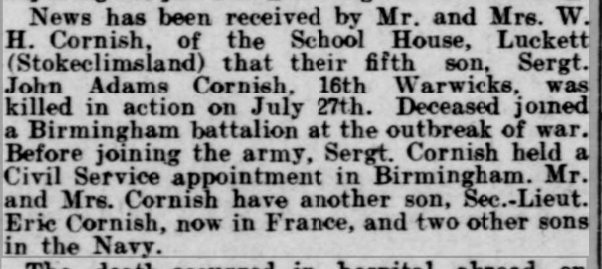
CORNISH Wilfred Arthur
Wilfred was born in 1881 at Luckett to William and Annie (nee Adams) Cornish. Brother to John above, his father was the board school master at Luckett School. On leaving school, Wilfred joined the Royal Navy serving in 1901 as an Assistant Steward. He went to become an ordinary seaman serving aboard HMS Pelorus during the Boer War. He later emigrated to New Zealand and it is here that he enlisted with the Auckland Regiment, N.Z.E.F. (67960), serving as a private with the 1st battalion. He was killed in action on November 4th, 1918. He was interred at the Ruesnes Communal Cemetery, France.
COUMBE Rundle (incorrectly spelt as Coombe on the war memorial)
Rundle was born in 1893 at Underhill Farm, Tutwell, Stoke Climsland to James and Elizabeth Coumbe. His father was a farmer. On leaving school, Rundle went to work for his father on Underhill farm, but in 1913, working as a clerk, he emigrated to Canada. It was from here in Edmonton that he enlisted at the outbreak of the war with the Canadian Mounted Rifles, joining as a private (regimental no. 108169) in the 3rd Regiment. He was killed in action on December 1st, 1915. He was interred in the Berks Cemetery Extension, Belgium, II. D. 34.
DENNINGTON F. C.
Nothing known
DOIDGE William Thomas
William was born in 1889 at Liskeard to Mr. and Mrs. Doidge. William joined the Royal Navy as a stoker (service no. K/4259) and it was as leading stoker aboard H.M.S. Indefatigable that he died on May 31st, 1916, when Indefatigable was sunk at the Battle of Jutland. He left a wife, Dorothy Florence Doidge, then living at 39, Rendle St, Plymouth.
DYMOND William Henry
William was born in 1897 at Queensland, Australia to William and Mary (nee Stratton). He enlisted at Bodmin with the Duke of Cornwall’s Light Infantry (regimental no. 18364) as a private serving with the 1st battalion. He was killed in action on April 18th, 1915 fighting at Flanders. He was interred at the Aeroplane Cemetery,Belgium.
EDWARDS John
John was born in 1891 at Stoke Climsland to Philip and Sarah Edwards. His father was a boot maker in Stoke Climsland. On leaving school, John worked as a general labourer. He enlisted at Camborne with the Duke of Cornwall’s Light Infantry (regimental no. 2811) as a private serving with the 2nd/4th battalion. He died on January 16th, 1916, whilst serving in Mesopotamia. He is remembered on the Basra Memorial, in modern day Iraq. His brother William also fell during the war.
Ernest FINNEMORE
Ernest was born in 1892 at St. John, Torpoint to John and Emma Finnemore. His father was a farm labourer. By 1911 Enest was living in Falmouth and working as a ship breaker. He was originally a member of the Territorial Forces serving as a Corporal in India. He enlisted with the Grenadier Guards (regimental no. 25386) as a guardsman serving with the 1st battalion in the August of 1916. He was initially listed as being wounded but it was later confirmed that he had been killed in action whilst in battle at Flanders on September 25th, 1916. His body was never identified and his name in commemorated on the Thiepval Memorial.
FLOYD Herbert
Herbert was born in 1890 at Stoke Climsland the base child of Mary E. Floyd. On leaving school, Herbert went to work as a general servant for cattle dealer Harry Cory at Taylor Shop, South Hill. He enlisted with the Royal Navy as a 2nd class stoker (service no. K/28294). He was serving aboard HMS Defence in the Battle of Jutland on May 31st, 1916, when two salvos from German ships exploded the rear magazine. The fire from that explosion spread to the ship’s secondary magazines, which exploded in turn. There were no survivors. Herbert’s name is commemorated on the Plymouth Naval Memoriam.
GRIFFIN Horace Johns
Horace was born in 1899 at Downgate, Stoke Climsland to Frederick and Laura (nee Johns) Griffin. His father who had been a miner, passed away in 1908 and his mother then ran a grocery shop at Downgate. Horace enlisted with the Royal Army Service Corps (regimental no. 318066) as a private. He was discharged for medical reasons on October 11th, 1918, and passed away 11 days later suffering from pleurisy. He was interred at the Wesleyan chapel yard at Venterdon.
GEAKE Richard Bond
Richard was born in 1898 at Downgate, Stoke Climsland to Richard and Rosetta (nee Rowe) Geake. His father was a farmer. Richard enlisted with the Duke of Cornwall’s Light Infantry as a private (regimental no. 34242) serving with the 6th battalion. He was killed in action whilst in battle at Flanders and was interred at the Hooge Crater Cemetery, Belgium.
HANCOCK Thomas
Thomas was born in 1877 at Bodmin to William and Mary Hancock. His father was a farm labourer. On leaving school Thomas also worked as a farm labourer. He enlisted with the Duke of Cornwall’s Light Infantry as a private (regimental no. 3/4261) serving with the 1st battalion. He died of wounds sustained in battle at Flanders on March 6th, 1915, and was interred at the Boulogne Eastern Cemetery, France.
HARTNELL H.
No further information currently
JANE William John
William was born in 1888 at Luckett to John and Selina Jane. His father was an above ground mine labourer and William followed his father’s trade working above ground at Luckett copper mine. By 1911, however, he had changed to working as a farm labourer. He enlisted at Callington with the Duke of Cornwall’s Light Infantry as a private (regimental no. 23871) serving with the 10th battalion. He was killed in action in battle at Flanders on November 16th, 1916. His body was never identified but his name is commemorated on the Theipval Memorial.
JASPER Frank
Frank was born in 1893 at Lezant to William and Jane (nee Mayne) Jasper. His father was a farmer. After leaving school, Frank worked as a farm labourer. He enlisted at Launceston with the Worcestershire Regiment as a private (regimental no. 36436) serving with the 1st battalion. He was killed fighting in battle at Flanders on March 4th, 1917.
JENKINS Ephraim
Ephraim was born on August 6th, 1890 at Callington to William and Mary Jenkin. On leaving school, Ephraim first worked as a tin miner before joining the Royal Navy on August 27th, 1908 as a stoker 2nd class (service number K/ 1237). He served aboard many ships before he was invalided out with a Pulmonary laryngeal tuberculosis on May 8th, 1913. He never recovered and died on May 9th, 1915.
JENKINS Percy
Percy, brother of Ephraim, was born in 1897 at South Hill to William and Mary Jenkin. Percy enlisted at Launceston with the Duke of Cornwall’s Light Infantry as a private (regimental no. 17099) serving with the 7th battalion. He was killed whilst in battle at Flanders on December 22nd, 1915. He was interred at the Y Farm Military Cemetery, France.
JENKIN Stanley Herbert
Stanley was born on January 11th, 1898 at Launceston to William and Mary Jenkin, their third son to perish. On leaving school Stanley first worked as a farm labourer before joining the Royal Navy in January 1913 as a sea boy (service no. J/ 22481). He was serving as a Able Seaman aboard HMS Defence when she exploded and sank with all hands during the Battle of Jutland on May 31st, 1916. His name is commemorated on the Plymouth Naval Memoriam.
JENKINS C.
No further information currently available.
JORDAN John Tredinnick
John was born in 1876 at Lezant to Elias and Elizabeth (nee Tredinnick) Jordan. On leaving school he first went to work as a farm servant before becoming a storeman at the Wheal Russell Mine near Morwellham Quay. He married Edith Friend at Tavistock Registry Office on October 5th, 1901 and they had two sons by which time the family had moved to Winsor, Kelly Bray where John was again storeman for one of the local mines there. He enlisted at Callington on December 9th, 1915 with the Royal Garrison Artillery as a gunner (regimental no. 107471) serving with the 238th Siege Battery. He remained in reserve until 22nd July 1916 when he was mobilised and posted to a base in Bexhill. He subsequently embarked in France on 19th March 1917 and went into action on 18th May 1917. His unit saw action around Ypres as part of the Battle of Passchendaele and it is here that he was killed in action on September 16th, 1917. He was interred at the Klein-Vierstraat British Cemetery, Belgium, Grave reference: III.C.3.
LOBB Nathaniel
Nathaniel was born in 1879 at 35, Exeter Street, Tavistock to Nathaniel and Ann (nee Reddicliffe) Lobb. His father worked on the railway, first as a porter at Tavistock then as a signalman at Plymouth before taking over his fathers farm at Higher Downgate on the later’s death. Nathaniel was a career soldier joining the Royal Engineers (regimental no. 5818) as a sapper. He saw service throughout the length of the Boer War serving with the 23 Company (Field). He had been promoted to the rank of sergeant by the arrival of the First World War disembarking in France on September 9th, 1914 with 12 Field Company by which time he was serving in the 12 Company (Field) . It was whilst serving with this Brigade that he won the Military Medal in 1916. He would later serve in the Headquarters Special Brigade. But like for so many the conditions on the Western Front battlefields played upon Nathaniel’s health and he died from Bronchopneumonia on March 10th, 1917 at the Stationary Hospital, St Omer, France. He was interred at the Longuenesse (St Omer) Souvenir Cemetery, France, IV. B. 37.
MURLEY Thomas Stanley
Stanley was born in 1895 at Lynton, North Devon to Thomas and Elizabeth (nee Gill) Murley. His father worked as a nursery man. On leaving school Stanley, trained as an engineer, living with his uncle, Edmund Dingle at Stoke Climsland. Stanley enlisted at Callington with the Devonshire Regiment as a private (regimental no. 45628) serving with the 8th battalion. He was killed in action during the Battle of Arras when his battalion attacked with great success, Ecoust on April 2nd, 1917. His body was never indetified but his name is commemorated on the Arras Memorial. His brother Percy Douglas Murley also served with the 8th battalion of the Devonshire Regiment also falling in 1917 just four months later in August.
NEALE Leslie John
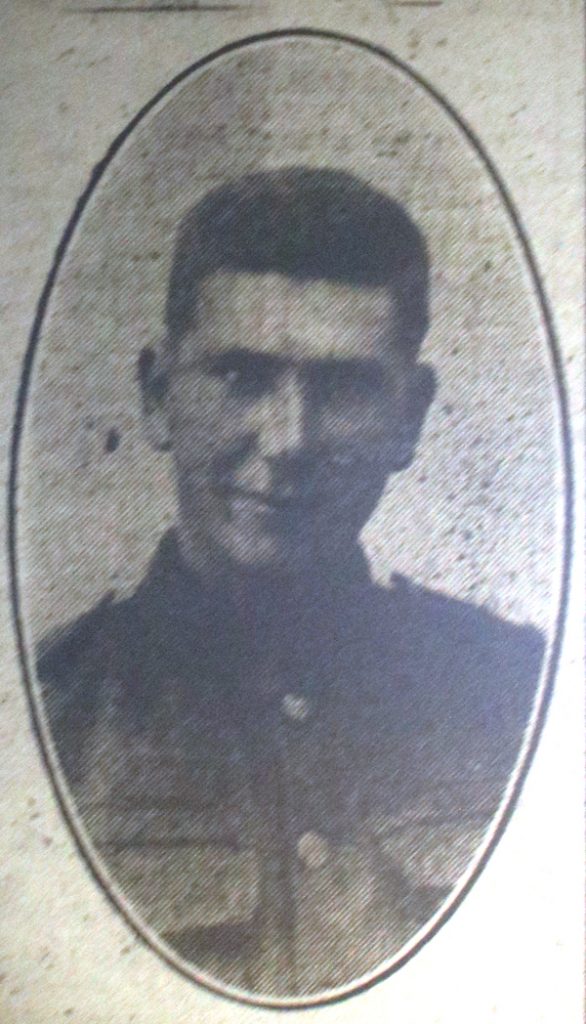
Leslie was born in 1898 at Lewannick to John and Eliza Neale. His father was a farmer, farming Crockett Farm, Stoke Climsland. He enlisted with the Devonshire Regiment as a private (regimental no. 69778) serving with the 1st/5th battalion. He contracted a chill in the trenches and died of phlebitis on December 12th, 1918, in France. He was interred at the St. Sever Cemetery Extension, Rouen.
PHILP E
This is possibly Edmund born in 1886 to William and Elizabeth Philp at Tutwell Farm. There is no information on his military record.
PHILP Philip
Philip was born in 1893 at Stoke Climsland to John and Emma (nee Parsons). His father was a labourer having worked above ground and the mines and then as an estate labourer. On leaving school Philip worked as a farm labourer. He enlisted at Bodmin with the Duke of Cornwall’s Light Infantry (regimental no. 4985) but was later transferred to the Royal Warwickshire Regiment as a private (regimental no. 34782) serving with the 16th battalion. He was killed in action on November 5th, 1917. His body was never identified but his name is commemorate on the Tyne Cot Memorial.
ROWLAND Ernest Henry
Ernest was born in 1888 at Poundstock to Richard and Elizabeth Rowland. His father was an agricultural labourer. On leaving school, Ernest went to work on a farm as a waggoner for Joseph Wenmouth at, Dannett Farm, Quethiock, near Liskeard. In 1916, he married Lily Wills at Launceston. Ernest enlisted at Callington with the Royal Horse Artillery And Royal Field Artillery as a saddler (regimental no. 966507)serving with the 53rd brigade. He died whilst serving in Palestine on October 28th, 1918 and was interred at the Gaza War Cemetery.
SANSOM John
John was born in 1894 at Devonport, Plymouth to William and Louisa (nee Oliver) Sansom. His father was a farmer at Whiteford. On leaving school, John joined his father working on the farm. He enlisted at Liskeard with the Devon Yeomanry as a private (regimental no. 45783) serving with the 9th battalion (service). He died in a London hospital of his wounds sustained in battle on May 23rd, 1917. He was interred at St Germans Churchyard Cemetery.
Edwin Charles SERPELL
Edwin was born in 1887 at Stoke Climsland to Samuel and Mary (nee Johns) Serpell. His father was a carpenter. On leaving school, Ernest went to work as a steam roller assistant (possibly for Dingles). However, he is listed as being an engine driver by the time he emigrated to Canada on June 3rd, 1913, leaving aboard the Royal Edward and landing in Montreal. He enlisted at Edmonton in 1915, with the Canadian Infantry (Alberta Regiment) as a private (regimental no. 100143). Arriving in France in July 1916, he was serving with the 49th battalion when he was killed near the village of Courcelette on the Somme on October 4th, 1916. He was interred in Courcelette military cemetery, France,VII. D. 6. . He never married.
SMITH Sydney John
Sydney was born in 1884 at South Hill to John and Jane Smith. His father was a corn miller at Manaton Mill, South Hill. On leaving school, Sydney worked first as a general labourer and then as a sawyer. He enlisted at Launceston with the Duke of Cornwall’s Light Infantry as a private (regimental no. 3916) but he later transferred to the Hampshire Regiment (regimental no. 204545) serving with their 15th battalion. He was killed in action on September 20th, 1917. His body was never identified but his name is commemorated on the Tyne Cot Memorial, Belgium. He never married.
WALTERS Lancelot John Barrington
Lancelot was born on January 19th, 1895 at Castle Bromwich, Warwickshire to the Rev Charles Barrington and Selena (nee Massy Beresford) Walters. His father was the vicar of Stoke Climsland. As soon as his education had been completed in 1908, Lancelot enrolled at the Royal Naval College at Dartmouth as a Naval cadet. He passed out on May 15th, 1913, as a midshipman and two years later he gained promotion to acting sun-lieutenant. By July, 1917, he had been promoted to Lieutenant and was serving aboard HMS Partridge. On 11 December 11th, 1917 the destroyer left from Lerwick on the Shetland Islands, along with HMS Pellew and several armed trawlers to escort six merchant ships to Bergen, in Norway.The convoy was spotted by a flotilla of German destroyers and they unsuccessfully fought an engagement with the attacking destroyers, with Partridge being hit repeatedly by shells and torpedoes. HMS Partridge subsequently sank in the North Sea on December 12th, 1917. Reports indicate that 97 of the crew were killed and only 24 were rescued. The wreck is believed to be off the Norwegian coast. Lancelot’s name is commemorated on the Portsmouth Naval Memorial.
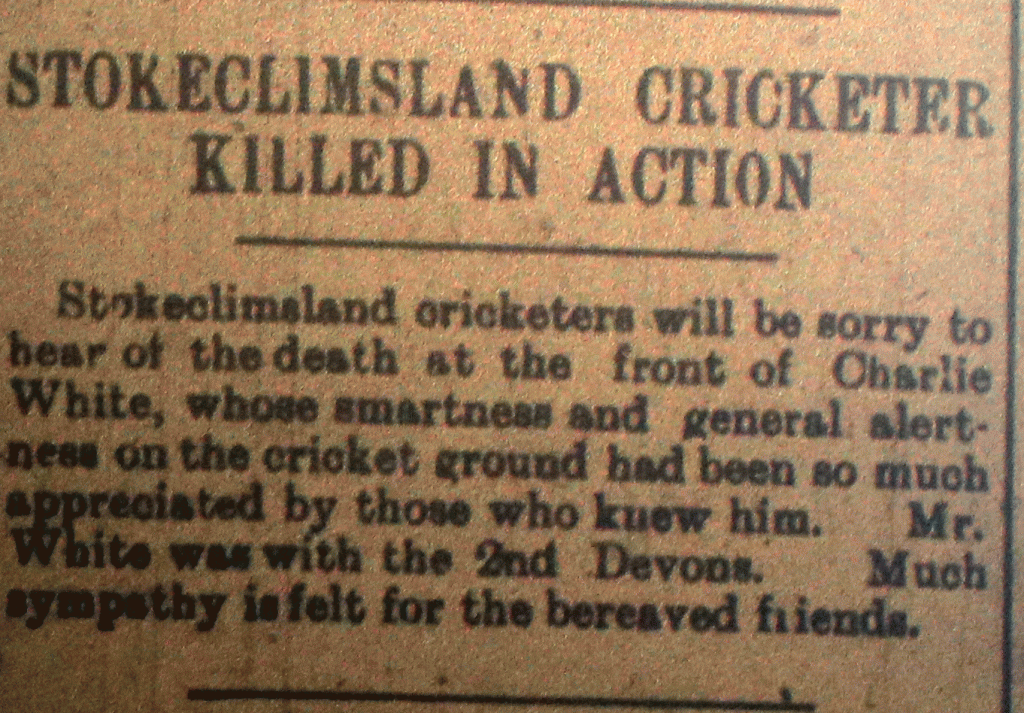
Alfred James WILLS
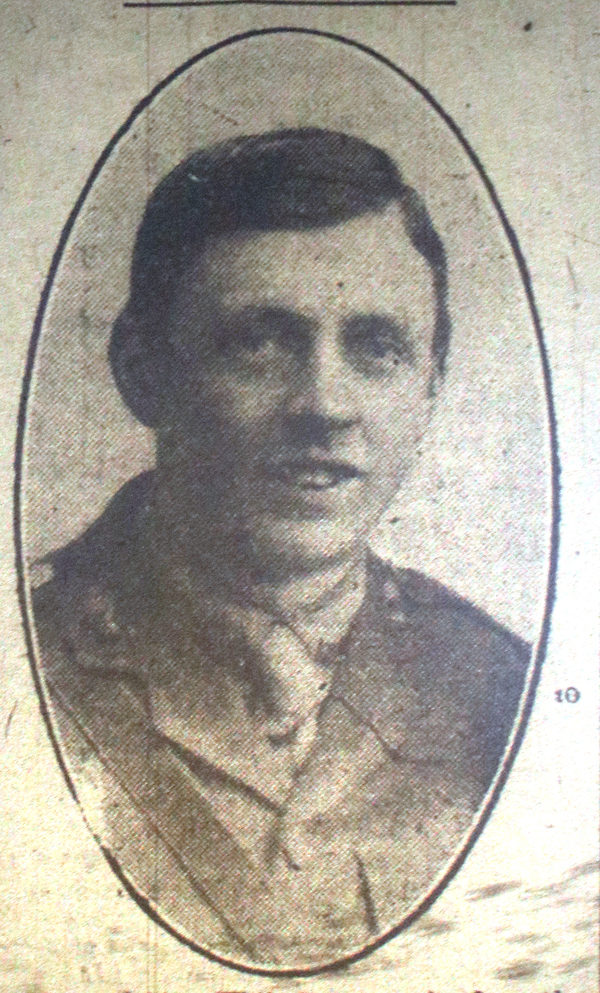
Alfred was born in 1895 at North Hill to James and Jessie Wills. His father was a boot maker a trade that Alfred followed into. In the spring of 1918 Alfred married Ethel Annie Jones, also from North Hill. Ethel died on 25th June 1990 in Launceston and is buried in St Torney’s churchyard in North Hill. She had been married for 8 months and a widow for 71 years. Alfred was secretary of the Wesleyan Sunday School at Venterdon. Alfred enlisted with the Royal Garrison Artillery (regimental no. unknown) serving with the 182nd Siege Battery. He rose in the ranks to 2nd Lieutenant by 1918. The 22nd Heavy Artillery (HA) Brigade included the 182nd Siege Battery which had been present in France since September 1916. Alfred was gazetted as Second Lieutenant from 21st January 1917. This meant that he was in charge of a large howitzer and its crew. The 22nd HA Brigade was part of the British Third Army which attacked in thick mist at 5:20 a.m. on 17th October 1918. Behind a creeping barrage, the infantry and tanks moved forward on a ten mile long front, south of Le Cateau. Despite tenacious enemy resistance and much uncut wire, the River Selle was crossed during the first day and by nightfall Le Cateau had been captured. The fighting continued into the next day and it is likely that Alfred was killed at this time during enemy counterbarrage fire when an enemy shell burst just behind Alfred’s position, killing him instantaneously. On the same day two other 182nd men also died. All three bodies were exhumed in 1920 from a grave location at the entrance to a sugar factory near Inchy, nearly three miles from Le Cateau, and reinterred together at the nearby Highland Cemetery in Le Cateau, XI. C. 4. His name is commemorated on the Stoke Climsland War Memorial.
Major H. T. J. Cruickshank, R.G.A. wrote to his wife in a letter dated October 18th, 1918:
Dear Mrs. Wills, It is with the greatest grief that I have to inform you that your husband was killed in action this morning. At the time, he was on duty with the guns, when an enemy shell burst just behind one of the guns, where he was standing and killed him outright. I have only recently taken over command of this battery, but from my short acquaintance with your late husband, I realised that by his devotion to duty and courage under hostile fire, he was an invaluable officer and a good example to his men. His loss will be much felt by his brother officers in the battery. His funeral will be carried out by the brigade chaplain in a garden near the battery position. Please accept my sincerest sympathy in your bereavement.
WILLS Edward John
John was born in 1894 at Luckett, Stoke Climsland to John and Betsy Ann Wills. His father was a copper miner in the Luckett Mines. His father died in 1901, when John was only 7 years old and his mother eventually remarried, to Francis Dawe. On leaving school, John became a general labourer. John enlisted at Bodmin with the Duke Of Cornwall’s Light Infantry as a private (regimental no. 240646) serving with the 1st/5th battalion. He died on October 24th, 1918 at Flanders, France. He was interred in the Highland Cemetery, Le Cateau, France,
Greater love hath no man than this, that a man lay down his life for his friends
Second Word War
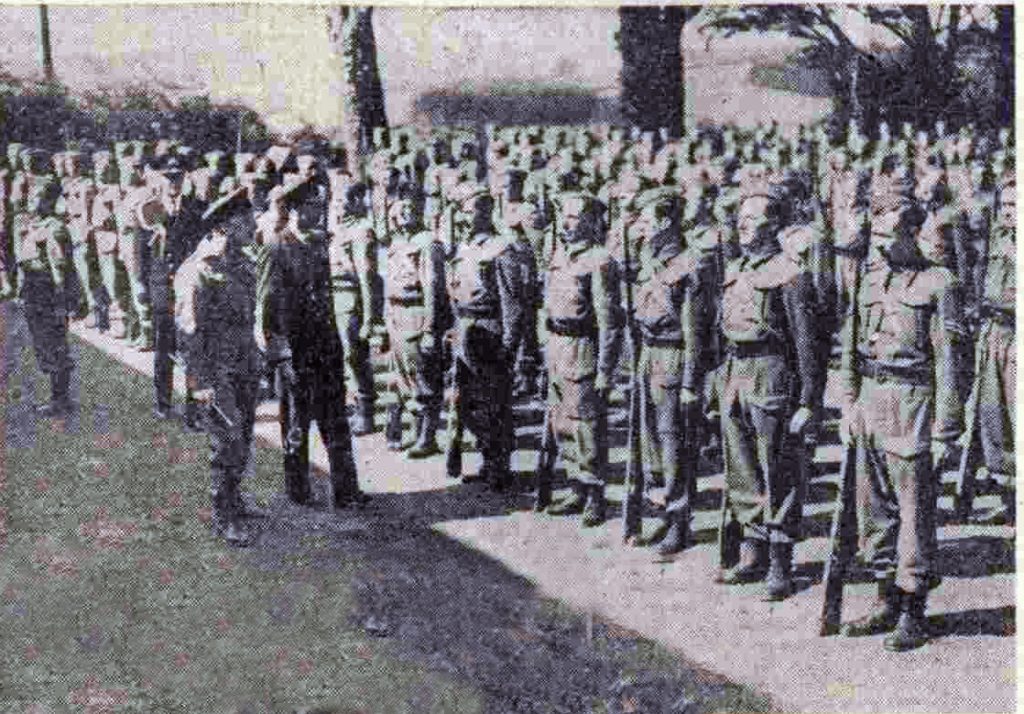
BLACKWELL Carlos Leonard
Carlos was born in 1916 in Seoul, Korea to Ernest and Zelma Blackwell. He continued his education by studying law passing his intermediate exam in April 1937. In 1938, Carlos married Kathleen Bow in Surrey. He enlisted with the Duke of Cornwall’s Light Infantry reaching the rank of Captain (regimental no. 109793). Serving with the 5th battalion, he took part in the D-Day landings on Normandy and just over a month later Carlos was killed in action on July 11th, 1944, when he won the military cross for bravery. He was interred at the Banneville-la-Campagne War Cemetery, Normandy, France.
COUCH R. J.
Possibly Reginald Joseph born in 1920 to Joseph S. and Emily Couch later of Totnes. He was serving as a Petty Officer Telegraphist with the Royal Navy (service no. D/JX 146499) aboard H.M.S. Isis which struck a mine and sank off the Normandy landing beaches on July 20th, 1944. She was later discovered during an expedition to locate the wreck of RMS Carpathia. Reginald’s body was never recovered but his name is commemorated on the Plymouth Naval Memorial.
EVELY Russell George
Russell was born in 1914 at Stoke Climsland to Lewis and Hetty (nee Percy) Evely. He married Kathleen Bickford in 1935 and they set home at Pempwell, Stoke Climsland. At this time Russell was working as a road worker. He enlisted with the Duke Of Cornwall’s Light Infantry serving as a corporal (regimental no. 5444091) with the 2nd battalion. He was killed whilst fighting around Cassiono, Italy on April 2nd, 1944. He was interred in the Cassino War Cemetery, Italy.
GRIBBLE Fred
Fred was born in 1912 at Launceston to Fred and Emily (nee Nichols). He enlisted with the RAF volunteer reserve serving as a flight lieutenant (service no. 134098). He served with 196 Squadron flying a Stirling IV LJ841 and after dropping off paratroopers on D-Day, June 6th, 1944, his plane was hit by anti-aircraft fire and crashed killing all onboard. Fred was interred at the Cagny Communal Cemetery in France. He left a widow, Eleanor Mohn Gribble, who lived at Long Island, USA.
HITT Albert Henry
Albert was born in 1915 at Plymouth to George and Mary Hitt. His father was a ship builders labourer. Albert joined the Royal Navy as a painter (service no. D/MX 74507). He was serving aboard HMS which after landing troops at “Duff White Beach”, near Cape Aoka on 12 November 1942. She then entered the bay of Bougie, Algeria and anchored with the others at 10 o’clock. The Germans made numerous air attacks during the night and at 0540 hrs she was hit by two bombs from Ju 88s and caught fire. The crew abandoned ship and she sank. Albert, however, was killed during the raid. He was interred in the La Reunion War Cemetery, Algeria.
MOORE James H.
James was born on February 5th, 1895, and in the 1939 register he is shown as being a widower living at Clitters, Stoke Climsland, and working as a general labourer. There are no details on his military career or his ultimate death.
ROWE Allin Roseveare
Allin was born in 1915 at Devonport, Plymouth, to Bertram and Ethel (nee Allin) Rowe. His father was a shipwright. Allin joined the Royal Navy as a stoker (service no. D/KX 82710) although he rose to the rank of Petty Officer Stoker. He was serving aboard HMS Stanley when at Gibraltar in mid-December she joined Convoy HG-76, departing 14 December for Britain. On 17 December one of the escort carrier Audacity’s aircraft sighted a submarine 22 miles on the port beam of the convoy. Stanley and four other escorts quickly established contact, sank U-131, and picked up 55 survivors. The next day, Stanley, with Blankney, scored another success, sinking U-434 and picking up 42 of her crew. On 19 December 1941, success ran out. Stanley, on station astern of the convoy, reported the presence of another U-boat. Half an hour later U-574 scored a direct hit; Stanley exploded and sank with the loss of all but 25 of her crew. Allin was one of those that perished. His body was never recovered but his name is commemorated on the Plymouth Naval Memorial, Panel 52, Column 1..
SEARLE Harry Doidge
Harry was born in 1921 at Launceston to James and Maud (nee Doidge) Searle. Harry was a sergeant in the RAF Voluntary Reserve (service no. 1315569). He was killed in an aircraft accident on August 21st, 1942, and was interred at Stoke Climsland Church.
TUCKER P
No further information currently
WAYE Thomas Alfred
Thomas was born in 1890 at Sydenham Damerell, Devon to Thomas and Emma (nee Cox, formerly Friend) Waye. His father was an agricultural labourer. On leaving school, Thomas went to work for the railways eventually becoming a signalman. He enlisted with the Royal Navy eventually rising in the ranks to Chief Yeoman of Signals (service no. D/ 238626). He married Emily Doidge at St. Germans in 1922. He was serving aboard S.S. Juma when it was attacked and sunk by a raider west of Cape Finisterre, Spain on December 25th, 1940. Thomas’s name is commemorated on the Plymouth Naval Memoriam.
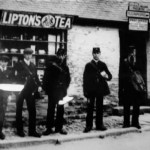
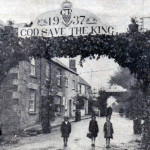
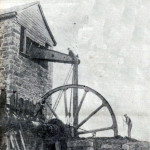
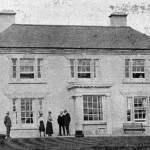
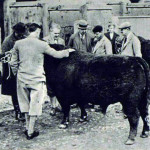
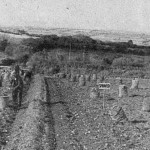
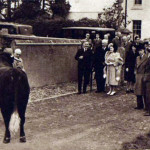
Visits: 414

